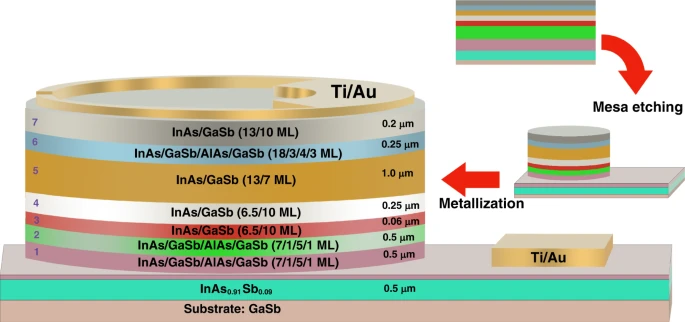EurekAlert February 2, 2021
State-of-the-art LWIR detection technology still suffers from shortcomings such as low photocurrent gain and excess spectral noise. Researchers at Northwestern University used a new approach to design the photodetector using a type-II superlattice, a material system known for its outstanding growth uniformity and exceptional band structure engineering and applied the new material to a heterojunction phototransistor device structure. During testing each part of the photodetector was tuned to use the phototransistor to achieve high optical gain, low noise, and high detectivity. The material’s flexibility allowed for meticulous quantum mechanics-based band structure engineering for the heterostructure design, making it a versatile candidate to push the limits of infrared detection. This artificial quantum structure opens the door toward next-generation high-gain photodetectors with potential for high-speed applications with ultra-sensitive detection capabilities for single photon detection…read more. Open Access TECHNICAL ARTICLE

Schematic diagram of the LWIR T2SL phototransistor structure with a summary of the key fabrication steps at the right. Credit: Light: Science & Applications volume 10, Article number: 17 (2021)